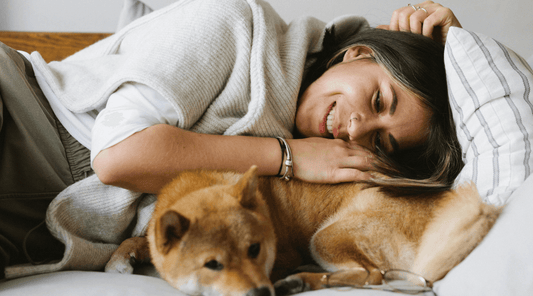
How to Stop Your Dog from Barking at Strangers: My Experience
Rachel RobsonShare
As a long-time dog parent and certified pet trainer, I've been exactly where you are.
My German Shepherd, Luna, used to transform our peaceful neighbourhood walks into impromptu bark concerts.
Every stranger was apparently a threat that needed to be announced to the entire post code!
After months of dedicated training and a few embarrassing moments (including one memorable incident with a very understanding mail carrier), we found our way to calmer, more enjoyable walks.
Understanding Why Dogs Bark at Strangers
Your dog's barking isn't just random noise – it's their way of communicating something important.
When Luna first came into my life, I mistakenly thought she was just being "protective."
It wasn't until I worked with a behavioural specialist that I understood she was actually expressing uncertainty and mild fear.
Dogs often bark at strangers due to fear, territorial instincts, or simple excitement. Think of it as their way of saying "Hey, I'm not sure about this situation!"
Signs Your Dog is Feeling Uncomfortable
Before we dive into solutions, it's crucial to recognize the early warning signs.
I learned to spot Luna's tells: her ears would perk up, and her body would stiffen slightly before the barking began.
Watch for raised hackles, a stiffened tail, or intense staring. These body language signals are your dog's first attempt at expressing their discomfort.
Creating Positive Associations with Strangers
The breakthrough moment for Luna came when we started treating every stranger as an opportunity for positive reinforcement.
We'd position ourselves across the street from the local coffee shop (far enough away to prevent reactivity) and I'd feed her tiny pieces of roasted chicken every time someone walked by.
The key is finding your dog's "comfort zone" – that sweet spot where they notice people but can still focus on you.
Practical Training Steps for Success
In my experience, consistency truly makes the difference. We started with short training sessions in quieter areas before progressing to busier environments. Remember that every dog learns at their own pace.
Luna took about three months before we saw significant improvement, while my friend's Beagle picked up the training in just a few weeks.
Managing On-Leash Encounters
I'll never forget the day Luna calmly walked past a group of joggers without a single bark – it felt like winning an Olympic medal! Getting there meant learning to read the environment and having strategies ready.
Use management techniques like crossing the street when needed, or carrying high-value treats to redirect attention.
Expert Tips for Faster Results
Through my work with other dog parents, I've found that combining different training tools often speeds up progress.
A front-clip harness gave me better control during Luna's learning phase, and the "Look at Me" command became our secret weapon for maintaining focus during challenging moments.
When to Seek Professional Help
Sometimes, we need an expert eye to spot what we're missing. In Luna's case, working with a professional trainer for just three sessions helped me refine my timing and technique, leading to much faster progress.
The Role of Exercise and Mental Stimulation
I discovered that morning puzzle toy sessions and short training games before walks made a huge difference in Luna's reactivity levels.
A tired dog is often a calmer dog. Try hiding treats around the house or using snuffle mats before heading out for walks.
Creating a Long-term Solution
The journey with Luna taught me that changing ingrained behaviours takes time and patience.
Some days were two steps forward, one step back – and that's okay. Focus on progress rather than perfection, and maintain a consistent training approach.
Common Mistakes to Avoid
One of my biggest early mistakes was tensing up whenever I saw someone approaching – Luna picked up on my anxiety and it made things worse.
Avoid punishing your dog for barking, as this can increase anxiety and worsen the behaviour. Instead, focus on rewarding calm behaviour and gradually building confidence around strangers.
Your Path to Peaceful Walks
Today, Luna and I enjoy peaceful walks where passing strangers barely warrant a glance. With patience, understanding, and the right training approach, you can help your dog feel more comfortable around strangers too.
Remember that every dog is unique, and what works for one might need adjustment for another.
Stay consistent with your training, celebrate progress, and enjoy watching your furry friend grow in confidence.
Have questions about your specific situation? Feel free to reach out in the comments below – I'd love to help you and your pup on your journey to calmer walks!



